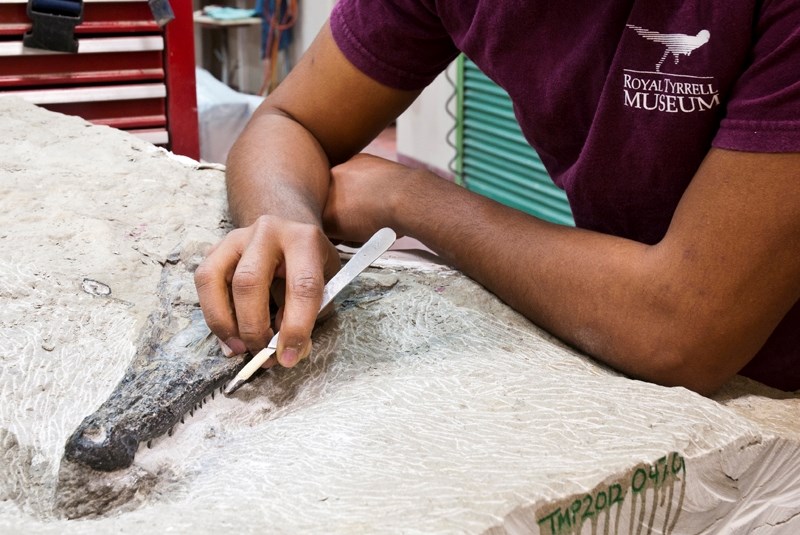Technicians from the Royal Tyrell Museum will be returning to Olds College this spring in search of more fossilized remains after an Olds College employee discovered a significant scientific find on the grounds of the college last month.
Leona Megli, a grounds technician found a champsosaur fossil preserved in a rock that she found while doing a groundskeeping project at the college.
“I was really excited. I was actually giddy the whole weekend before the tech came out,” she said.
The champsosaur resembled a crocodile and measured about two metres in length. They lived 120 – 55 million years ago. This specimen is from the Paleocene, about 60 million years ago.
At first, when she found the rock, Megli thought it might be an old banana peel or black glue that workers sometimes wipe on rocks. On closer inspection, though, she realized it was a bit more significant.
“To find out now that it's only one of three specimens found in North America, it's pretty mind blowing,” she said.
Megli made the discovery on Oct. 12 just southeast of Phase III of the botanic gardens in the grounds shop among a pile of rocks that had been dug up.
Megli said the timing of the find couldn't have been better, with the centennial of the college coming up next year.
“I think this could be really big for the college. Next year's our centennial, so to find a 60 million-year-old fossil at the same time is pretty cool, especially when we have land programs here. It's pretty great for the college,” she said.
Don Brinkman, director of preservation and research at the Royal Tyrell Museum, said the fossil is extremely well preserved.
One of the significant points about the find is that it dates just after the extinction of the dinosaurs, so it becomes a good guide to tell what kind of species were alive during that time period.
“One of the things we're interested in is knowing what animals were around following the extinction of the dinosaurs to know how the communities recovered and what the communities were like,” he said.
The other interesting fact is that there were similar animals in Europe, so this find helps explain the types of species in both Europe and North America and adds evidence to an interchange of species between the two continents at some point.
It's the only champsosaur found in Alberta so far, and only the third in North America. The other two were found in Saskatchewan and North Dakota.
“We were really very surprised when we started preparing it and realized it was this Simoedosaurus because there's only been two specimens of this kind of champsosaur found in North America previously,” Brinkman said.
Like many scientific discoveries, finding the specimen leads to more questions about assumptions previously made about what was happening during that time period.
“Maybe we don't fully understand the pattern of distribution of these animals in North America at that time period,” he said.
Brinkman said it's extremely difficult to determine how common this species was. He said in relative terms, it was more common than crocodiles but less common than turtles.
For more photos from the find, please see page 12.



